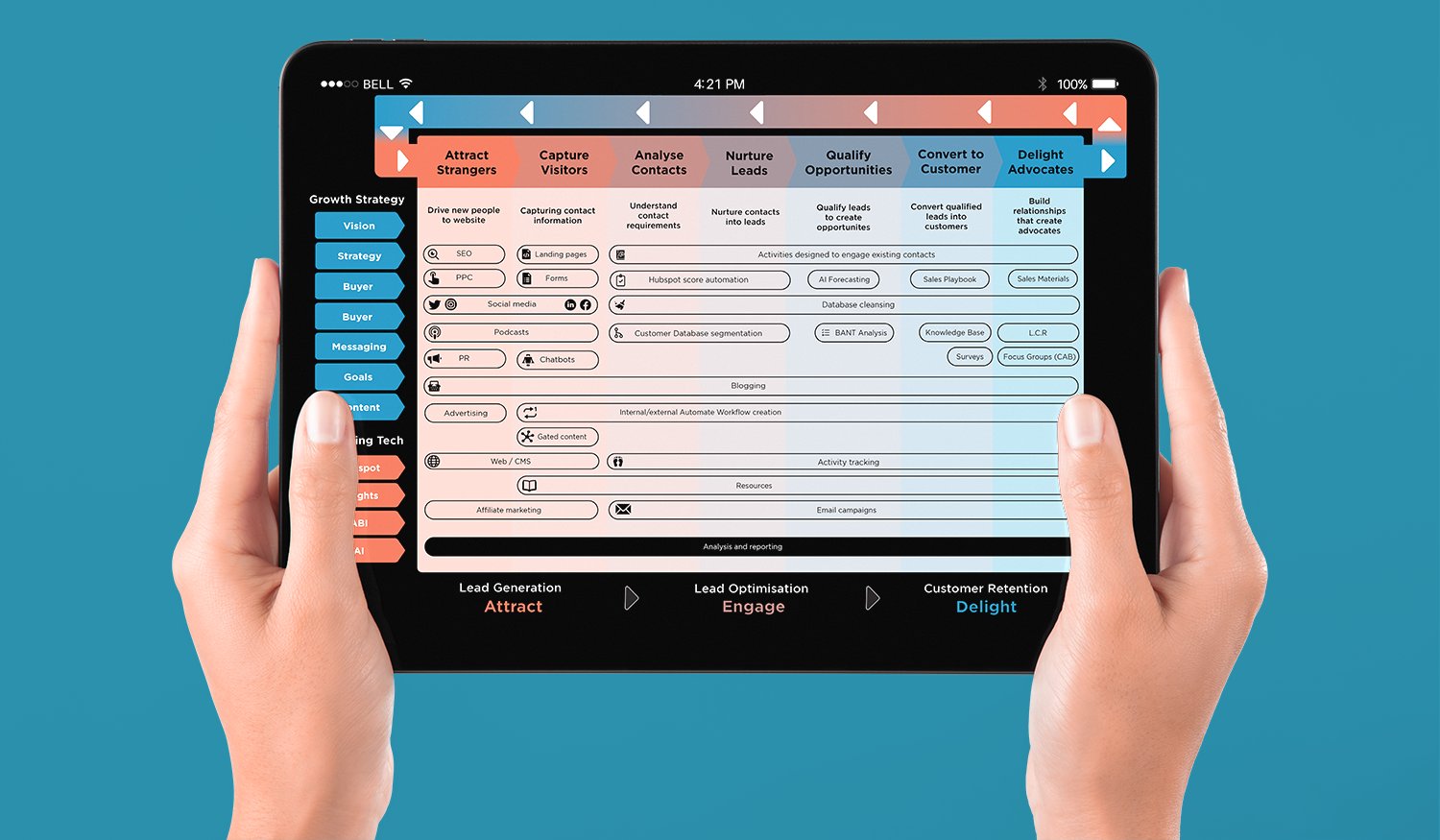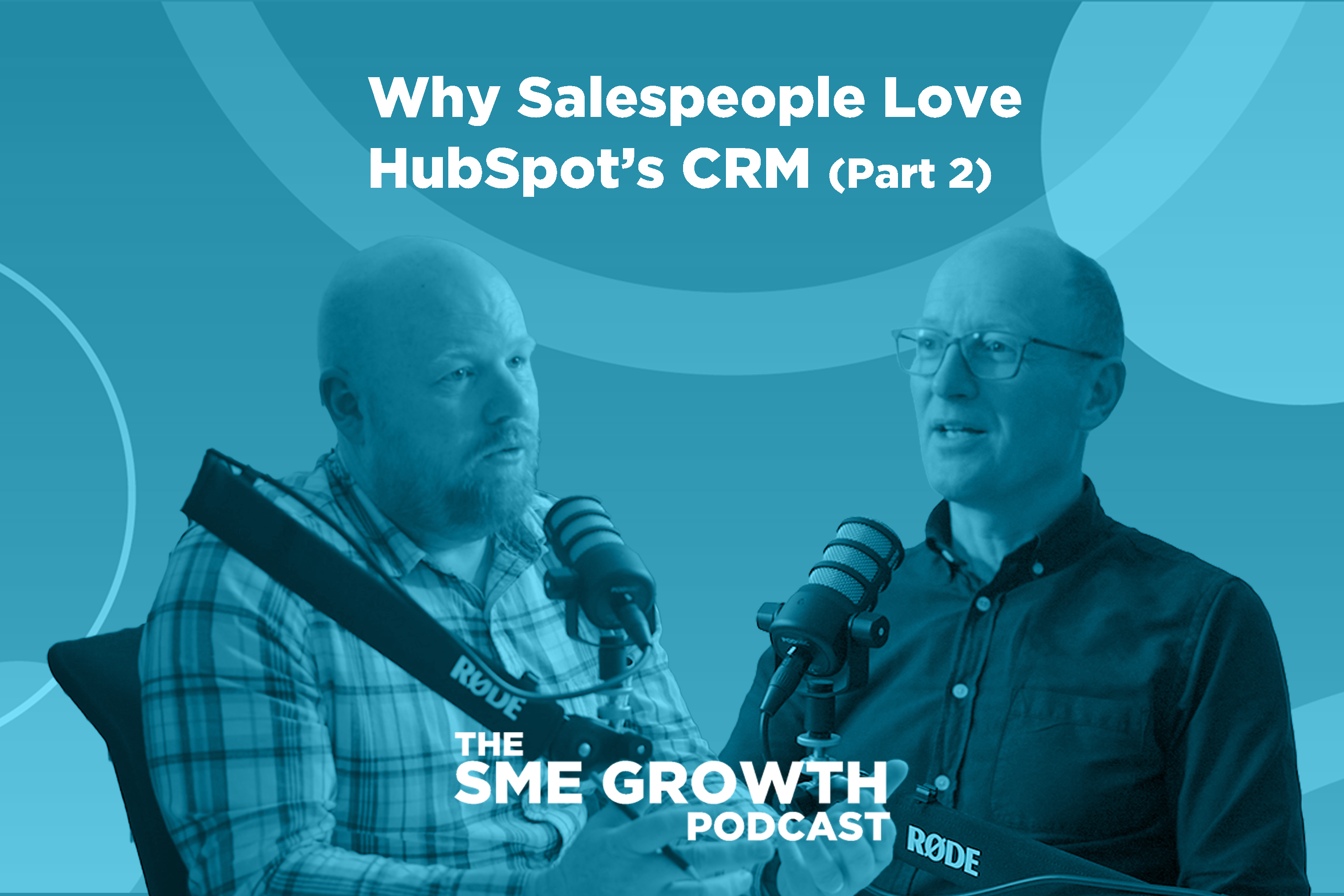7 Steps to Increase Business Growth
As a growth agency the most common question we get asked is "How do I increase my business growth?". This is our 7 step process to help increase your...
Wellmeadow supports ambitious companies with business growth enabled by HubSpot.
We've worked with over 100+ businesses at board-level across sectors such as automotive, manufacturing, healthcare, legal, SaaS, and professional services.

%20(A4).png?width=71&height=100&name=portrait%206-box%20model%20diagram%20(1170%20x%207051%20px)%20(A4).png)

-1.png?width=70&height=70&name=Square%20(1)-1.png)

Once you have a clear vision for your business, then you can start putting steps in place to begin to achieve this.
If you need help creating your business growth vision, read our article here How to create a business vision for growth.
Unfortunately there is no magic wand to wave and just make it happen - it's going to take some co-ordinated effort to turn this vision into a reality. Sometimes, people who are looking for growth want to jump straight in and start doing things. However, an unstructured approach to your growth marketing efforts is going to result in potential difficulties in figuring out what does or doesn't work.
There are a few different things to consider before we start "doing" stuff:
Strategy - the most overused word in business jargon.
There is a common misconception that if you add the word "strategy" to another word, it suddenly makes what you're talking about sound more important.
That being said, having a strategic plan for growth is critical but it needs to be more than just fluff or a "once-a year" project.
Strategy is the link between the big picture and the detail. In his book "Good Strategy, Bad Strategy", Richard Rumelt defines good strategy as being simple and straightforward (we like that!). A business growth strategy should have a clear results-orientated action plan to overcome a defined challenge.
He identifies three components that form the foundation of a good strategy:
Avoid just asking the question "what is going on around here?". Evaluate the data, look for trends, and examine all the available facts. List out your strategic ideas and develop a process to review, test, and critique them.
Once you've established your strategic direction (or intent), you need a framework to guide your team's actions and decisions. These could be informed by your company's values and purpose. A guiding policy will help signpost the way in which the strategy should be implemented.
You know where you're going, you understand where you're starting from, and you know how you want to get from A to B. Now you've got to just do it! Building a coherent action plan involves allocating resources to do the right things at the right time to move you towards achieving your vision for growth.

Planning is not just about working out the strategy for growth. There's a load of stuff to put into the mix.
Okay, final bit about strategy (promise). Think about what types of marketing channels you'll want to use. Will you go for inbound or outbound marketing? Have you got budget or resource constraints? Does the business model make sense? A gap in the market doesn't mean there's a market in the gap...
A few things to think about.
Good question. You probably have a good idea about who your customers are, but we want to go deeper. Have you got detailed buyer personas? If not, you should think about how to collect more data so you can offer greater value to prospects and customers.
There's many tools out there that can help you leverage the power of technology. This means you can automate processes and provide a better experience for you customers. For example, not everyone buys from you straight away, so using automated emails is a great way for staying in touch with prospects.
Combine this with buyer personas and you've got the ability to personalise content!
It does take a bit of planning to make it work right. What software will you use? How does it integrate into other business systems? Who's going to manage it? The list goes on!
You've hopefully got (or will soon have) an awesome BHAG. However, this will need to be broken down into more manageable goals.
If you've been around the block a few times you'll have heard of SMART goals. Specific, measurable, achievable, relevant, time-bound goals are the name of the game.

Setting goals is key to being able to measure the progress towards your BHAG. You can also link elements of your vivid description to goals/KPIs to help make these measurable. Remember, you manage what you measure.
Once you have your vision in place, setting goals to support your strategy will help make sure you get there.
To find out more about how to grow your business, download our free ebook Building a Business Growth Engine.

As a growth agency the most common question we get asked is "How do I increase my business growth?". This is our 7 step process to help increase your...

Not everything requires manual intervention; and by leveraging marketing automation, you can save time and enhance efficiency to capitalise on...

CRMs have a reputation of being disliked by salespeople, who view them as an administrative burden that prevents them from doing what they do best,...